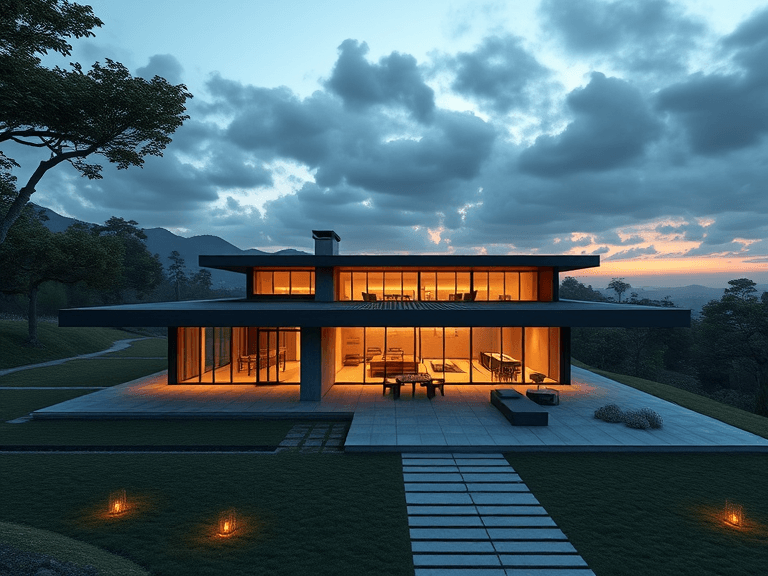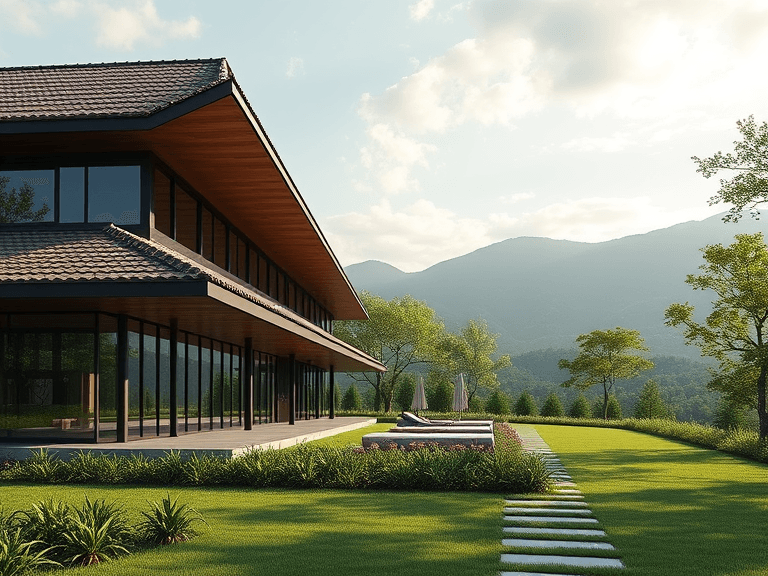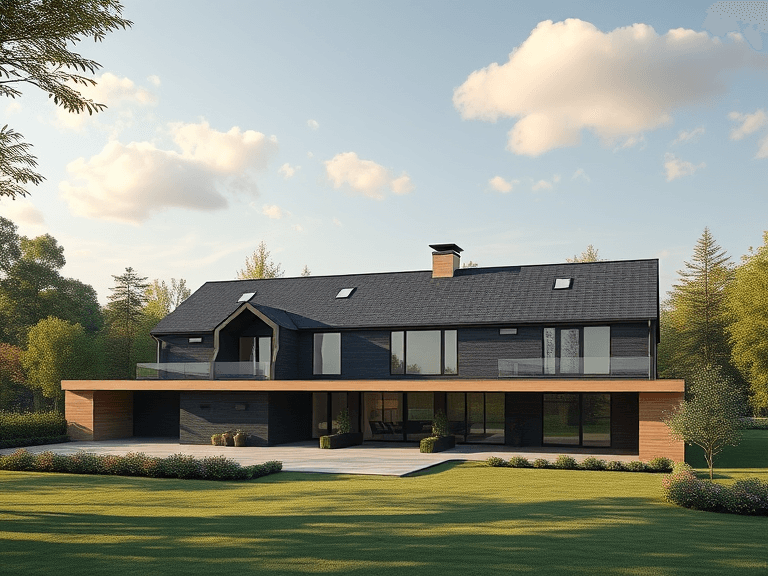
Flat roofs are a prevalent architectural choice, particularly in commercial buildings, although they can also be found in residential properties. Characterized by a minimal slope or a completely level surface, these roofs offer practical space utilization, including rooftop gardens and HVAC installations. Their design allows for easier access for maintenance and inspection, which is a significant consideration in flat roof maintenance coating applications and restoration services.
Common materials used in flat roof construction include modified bitumen, EPDM (ethylene propylene diene monomer), TPO (thermoplastic polyolefin), and built-up roofing systems. Each material presents unique benefits and challenges, influencing the overall durability and maintenance requirements of the roof. For instance, while EPDM is known for its longevity and ease of installation, TPO offers energy efficiency and reflective properties that can help in reducing cooling costs. Understanding these materials is crucial when considering appropriate coating applications for maintenance.
One of the primary advantages of flat roofs is their cost-effectiveness. They require fewer materials than pitched roofs, leading to reduced construction costs, and generally, they facilitate easier access for repairs. However, flat roofs also come with several disadvantages, including poor drainage, which can lead to pooling water and damage over time. Consequently, flat roof maintenance is crucial to ensure longevity; without it, common issues might arise, such as leaks and structural deterioration.
Generally, the lifespan of a flat roof can range from 10 to 30 years, depending on the materials used and the level of maintenance applied. Regular inspections and proper maintenance, including the application of protective coatings, are essential for extending the life of these types of roofs. Such maintenance can help prevent costly restoration services later on, ensuring that the roof remains effective and efficient throughout its lifecycle.
Importance of Regular Flat Roof Maintenance
Regular maintenance of flat roofs is an essential practice for property owners looking to ensure their investment remains secure and functional. A well-maintained flat roof can significantly extend its lifespan, effectively delaying the need for costly replacements. This proactive approach enables property owners to leverage flat roof maintenance coating applications and restoration services, which are designed to address issues before they escalate into more significant problems.
One of the most critical benefits of regular flat roof maintenance is the prevention of leaks and water damage. Flat roofs are more vulnerable to pooling water, which can lead to structural issues and costly repairs if not properly addressed. By scheduling routine inspections and maintenance, property owners can identify and rectify minor issues before they evolve into major leaks, safeguarding the integrity of the building and its contents.
Additionally, routine maintenance enhances the roof’s insulation properties, contributing to energy efficiency. A flat roof that is well-coated and maintained reduces heat loss during colder months and keeps interiors cooler during warmer weather. This can lead to lower energy bills and a more comfortable living or working environment, fostering a sense of well-being for occupants.
Moreover, maintaining a flat roof contributes to retaining the overall value of the property. Potential buyers often scrutinize the condition of roofs during the buying process, and a well-maintained flat roof can serve as a selling point. On the contrary, neglecting maintenance can lead to visible deterioration, ultimately impacting property valuation. regular flat roof maintenance coating applications and restoration services are crucial steps in preserving the roof’s appearance and functionality.
Neglecting flat roof maintenance can have dire consequences. Failing to address minor issues can result in severe water damage, mold growth, and structural compromise, leading to more extensive repairs and financial burdens. Therefore, it is clear that the importance of regular maintenance cannot be overstated; it is a vital aspect of property management that enhances protection, efficiency, and value.
Flat Roof Coatings: An Overview
Flat roof coatings serve as essential applications in the maintenance and longevity of flat roofing systems. These specialized materials are designed to create a protective layer over the roof’s surface, which can significantly enhance its performance and durability. When applied correctly, flat roof coatings can help prevent adverse effects caused by weather conditions, such as water ponding and UV damage, thus contributing to a healthier building envelope.
There are several types of flat roof coatings available, each with unique properties suited to different environments and performance needs. Silicone coatings are renowned for their excellent waterproofing abilities and resistance to UV radiation. They form a seamless layer that can effectively repel water, making them particularly useful in areas prone to heavy rainfall. Acrylic coatings, on the other hand, offer flexibility and ease of application, which can be especially beneficial in repair scenarios. Their ability to expand and contract with temperature variations adds to their appeal for long-term roof protection. Polyurethane coatings provide a robust solution, characterized by their high resistance to foot traffic and industrial chemicals, making them ideal for commercial and industrial settings.
The role of flat roof coatings extends beyond mere protection; they can also improve a building’s energy efficiency. By reflecting sunlight, many coatings can reduce heat absorption, thereby alleviating the burden on cooling systems during warm months. This not only contributes to lower energy costs but also enhances the comfort of indoor spaces. Furthermore, the application of coatings minimizes the likelihood of water pooling, a common issue with flat roofs that can lead to structural damage over time. By understanding the various types of flat roof maintenance coating applications available, property owners can make informed decisions that will help restore and extend the life of their roofing systems.
Coating Application Process
Applying a coating to a flat roof is a systematic process that ensures durability and longevity. The initial step in flat roof maintenance coating applications is proper surface preparation. This involves cleaning the roof thoroughly to remove dirt, debris, and any existing loose materials. A broom, blower, or power washer may be utilized to achieve a clean surface. If there are any cracks or punctures, these issues should be addressed by repairing them with appropriate roofing materials. Repairing damages not only enhances the efficacy of the coating but also helps prevent future leaks and deterioration.
Following surface preparation, material selection is crucial. Various coating materials are available, including acrylic, silicone, and polyurethane. Each type has its unique properties and advantages related to performance, reflectivity, and lifespan. When selecting the right coating, consider factors such as climate, roof type, and cost. Consulting with a professional may be beneficial to ensure the chosen coating aligns with specific roof conditions.
Once the materials are selected, the application techniques can begin. Coatings can either be sprayed or rolled onto the surface, depending on the volume and consistency required. Spray applications allow for even coverage and are typically faster, while roll-on methods provide a more controlled approach and are suitable for detailed areas. It is essential to adhere to the manufacturer’s guidelines regarding application thickness to maximize the benefits of the coating.
After application, drying and curing times vary based on factors such as temperature and humidity. Environmental considerations should also be taken into account, addressing any potential runoff or impact on local fauna. Incorporating safety measures during the application is paramount; this includes wearing protective gear and ensuring adequate ventilation in the work area. Ultimately, meticulous attention to each of these steps in the coating application process will contribute to effective flat roof maintenance and long-term preservation.

Identifying Signs Your Flat Roof Needs Restoration
Flat roofs can be particularly prone to a variety of issues due to their design and the materials used. Therefore, regular inspections are vital to ensure longevity and functionality. One of the most common indicators that your flat roof requires restoration services is the occurrence of frequent leaks. These leaks not only compromise the integrity of the roof but can also lead to extensive water damage within the building if not addressed promptly. Water intrusion can weaken structural components, leading to costly repairs.
Ponding water is another critical sign. When water collects on your roof rather than draining away appropriately, it can indicate an underlying problem with the flat roof’s drainage system or slight depressions in the surface. This standing water can lead to accelerated wear and tear on roofing materials, necessitating immediate flat roof maintenance coating applications to prevent further deterioration.
Visible deterioration of the roofing membranes is also a telltale sign that your flat roof might need restoration. Cracking, curling, or tearing of the membrane can expose underlying materials to the elements, increasing susceptibility to leaks and further damage. Additionally, blistering or peeling coatings can indicate a failure in the roofing system, which may necessitate re-coating or a complete restoration. If these signs are left unaddressed, the costs involved in flat roof maintenance can escalate significantly.
It is crucial to act promptly upon noticing these indicators to mitigate damage and extend the lifespan of your flat roof. Regular inspections and timely restoration services not only help maintain the functionality of the roof but can also save you money in the long run by preventing more severe issues. Engaging professionals for routine evaluations may assist in identifying problem areas before they lead to significant repair needs.
Restoration Services: What to Expect
When it comes to flat roof maintenance, understanding the available restoration services is crucial for homeowners and property managers. These services primarily focus on addressing issues such as leaks, damaged membranes, and overall deterioration of the flat roof. Each service has specific procedures and outcomes, tailored to enhance the longevity and functionality of the roofing system.
One significant type of restoration is the repair of leaks. This process typically involves a comprehensive evaluation of the roof to identify the source of leaks. Professional restoration services utilize advanced techniques, such as thermal imaging and moisture detection tools, to assess the condition of the roof accurately. Once leaks are identified, the repair process may include patching, sealing, or more extensive interventions depending on the severity of the damage.
In cases where the damage is more extensive, replacement of damaged membranes may be necessary. This involves removing the compromised sections and installing new membrane material. High-quality materials are essential to ensure that the new installation provides adequate protection against the elements, enhancing the roof’s durability.
Moreover, full restoration through flat roof maintenance coating applications is an increasingly popular option. This process involves applying a protective layer to the entire roofing surface, which can improve waterproofing, reflectivity, and energy efficiency. The evaluation process will help professionals determine the best restorative coating, considering the roof’s current condition and specific needs.
Timelines for these restoration services can vary significantly based on the extent of work required and weather conditions. Costs also differ widely, influenced by factors such as the materials used, size of the roof, and labor involved. Engaging reputable restoration services ensures that property owners receive a thorough assessment and clear expectations regarding both timeframes and financial investments for the restoration of their flat roofs.
Choosing the Right Contractor for Flat Roof Maintenance and Restoration
When undertaking flat roof maintenance or restoration services, selecting a qualified contractor is paramount. The effectiveness of your flat roof maintenance coating applications largely depends on the expertise of the contractor involved. To begin, consider a contractor’s experience in the industry. Contractors with extensive knowledge are more likely to provide high-quality services, ensuring the longevity and durability of your flat roof.
Another critical factor is the certifications held by the contractor. Many regions require specific licenses and insurance coverage, which can serve as a guarantee of legitimacy and a commitment to quality. Ensure that the contractor has the necessary qualifications and affiliations with reputable organizations within the roofing industry. This not only reflects professionalism but also underscores their dedication to adhering to industry standards.
Reviewing testimonials and feedback from previous clients can provide insight into the contractor’s reliability and the quality of their flat roof maintenance and restoration services. Look for detailed reviews that focus on the contractor’s communication skills, professionalism, and the effectiveness of their work. Positive reviews can be a compelling indicator of a contractor’s ability to meet your needs.
Warranties offered by the contractor also play a crucial role in your decision-making process. A comprehensive warranty on labor and materials signifies confidence in the quality of their services. This assurance can protect you from future unexpected repair costs. Moreover, always inquire about the contractor’s insurance status. A reputable contractor should have liability insurance and worker’s compensation coverage to protect you and your property in case of accidents during the maintenance process.
By carefully evaluating these factors, property owners can make informed decisions, ensuring they select a contractor that offers reliable flat roof maintenance coating applications and restoration services. Taking the time to do thorough research upfront can save significant costs and headaches in the long run.
DIY Maintenance Tips for Flat Roof Owners
Flat roofs, while popular for their modern aesthetic and efficient use of space, require regular maintenance to ensure longevity and performance. Homeowners and property managers can undertake several practical steps to maintain their flat roofs effectively. One vital aspect is conducting regular inspections. It is advisable to perform these inspections at least twice a year—preferably in early spring and late autumn—to identify any early signs of damage such as cracks, blisters, or ponding water.
Another important maintenance tip involves clearing debris from the roof surface. Over time, leaves, twigs, and other debris can collect on a flat roof, leading to moisture retention and potentially causing leaks. Regularly removing these materials not only prevents water pooling but also preserves the integrity of the roof’s surface, thus extending the effectiveness of any coating applications previously used.
Equally critical is checking and cleaning the drainage systems. Clogged drains can lead to water accumulation, creating stress on the roof structure. Homeowners should ensure that drains and gutters are free from blockages and functioning correctly to facilitate proper water flow away from the roof. This maintenance task should be performed whenever debris is removed.
Additionally, attention should be paid to the seams and flashings of the roof. Regularly inspect these areas for any signs of wear or deterioration, as compromised seams can lead to significant leaks. If any issues are found, it is crucial to repair them promptly. For more extensive problems, consulting with professionals who specialize in flat roof maintenance, coating applications, and restoration services is recommended, ensuring that appropriate solutions are implemented.
By adhering to these DIY maintenance tips and being proactive about your flat roof’s care, property owners can mitigate potential damage and prolong the lifespan of their roofing system. Remember that seasonal checks and timely interventions are key components in maintaining a reliable and effective roof.
Future Trends in Flat Roof Maintenance and Coating Technology
The landscape of flat roof maintenance is rapidly evolving, driven by advancements in technology, materials, and environmental considerations. One of the most significant trends emerging in the industry is the increasing focus on eco-friendly materials. These sustainable options are not only better for the environment but also often offer enhanced performance benefits. Manufacturers are developing coatings made from recycled materials and non-toxic substances, which contribute to reducing the carbon footprint of roofing systems.
Another noteworthy trend is the adoption of reflective coatings. This type of coating application is designed to improve energy efficiency by reflecting sunlight away from the roof surface, which can reduce heat absorption and lower energy costs for buildings. Reflective coatings enhance the longevity of flat roofs and contribute to a cooler urban environment, aligning with global efforts to combat climate change.
Furthermore, smart technology integration is becoming increasingly popular in flat roof maintenance. The incorporation of sensors and smart monitoring systems allows for real-time assessment of roof conditions. These technologies can detect leaks, moisture accumulation, and other potential issues before they escalate into larger problems, reducing maintenance costs and prolonging the lifespan of the roofing system. The use of drones for inspections is also gaining traction, providing a safer and more efficient way to monitor roof conditions and plan maintenance activities.
Current research continues to explore innovative materials and systems for flat roof restoration services. These developments promise improved durability, better energy efficiency, and enhanced weather resistance. As these industry trends unfold, property owners and managers are encouraged to stay informed on emerging technologies and materials. Engaging with professional flat roof maintenance services that focus on these advancements can ensure optimal care and longevity of flat roofing systems.


